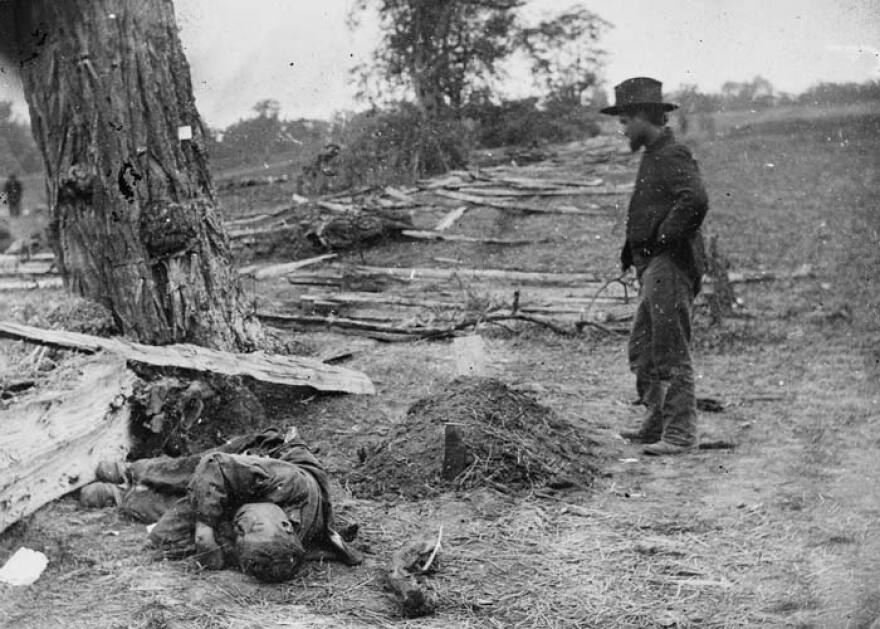From acclaimed filmmaker Ric Burns, "Death And The Civil War" explores an essential but largely overlooked aspect of the most pivotal event in American history: the transformation of the nation by the death of an estimated 750,000 people – nearly two and a half percent of the population – in four dark and searing years from 1861 to 1865.
NPR Interview: Author Drew Gilpin Faust
Listen to Terry Gross from Fresh Air interview author Drew Gilpin Faust about her book "This Republic of Suffering:Death and the American Civil War." You can also read an excerpt from her book.
Significant Civil War Battles
For four straight years (1861 to 1865), Union and Confederate soldiers battled during the bloodiest war in American history. Both sides suffered unprecedented casualties, and the severe lack of infrastructure made accurate accounting of those soldiers near impossible. View a timeline of battles.
Civil War Resources
View a listing of related books and websites.
With the coming of the Civil War, and the staggering and completely unprecedented casualties it ushered in, death entered the experience of the American people as it never had before – on a scale and in a manner no one had ever imagined possible, and under circumstances for which the nation would prove completely unprepared. The impact would permanently alter the character of the republic, the culture of the government and the psyche of the American people – down to this day.
“Transpose the percentage of dead that mid-19th-century America faced into our own time – seven million dead, if we had the same percentage,” says author Drew Gilpin Faust, on whose groundbreaking book, "This Republic of Suffering," the film is based. “What would we as a nation today be like if we faced the loss of seven million individuals?”
"Death And The Civil War" tracks the increasingly lethal arc of the war, from the bloodless opening in 1861, through the chaos of Shiloh, Antietam, Gettysburg, and the unspeakable carnage of 1864 – down through the struggle, in the aftermath of the war, to cope with an American landscape littered with the bodies of hundreds of thousands of soldiers, many unburied, most unidentified.
The work of contending with death on this scale would propel extraordinary changes in the inner and outer life of all Americans – posing challenges for which there were no ready answers when the war began – challenges that called forth remarkable and eventually heroic efforts on the part of individuals, groups and the government – as Americans worked to improvise new solutions, new institutions, new ways of coping with death on an unimaginable scale.
Before the Civil War, there were no national cemeteries in America. No provisions for identifying the dead, or for notifying next of kin, or for providing aid to the suffering families of dead veterans. No federal relief organizations, no effective ambulance corps, no adequate federal hospitals, no federal provisions for burying the dead. No Arlington Cemetery. No Memorial Day.
The program premieres in conjunction with the 150th anniversary of Antietam, the bloodiest one-day battle in American history.
AMERICAN EXPERIENCE is on Facebook, and you can follow @AmExperiencePBS on Twitter.

















